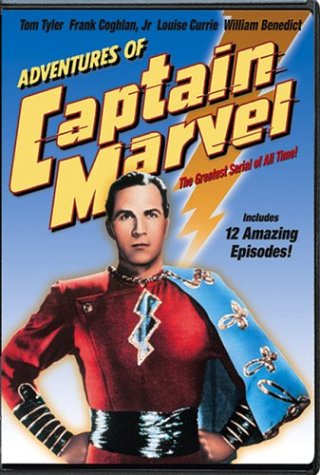Serials, more specifically known as Movie serials, Film serials or Chapter plays, are short subjects originally shown in theaters in conjunction with a feature film. They were related to pulp magazine serialized fiction. Also known as “chapter plays”, they were extended motion pictures broken into a number of segments called “chapters” or “episodes”. Each chapter was screened at the same theater for one week, and ended with a cliffhanger, in which the hero and heroine found themselves in a perilous situation with little apparent chance of escape. Viewers had to return each week to see the cliffhangers resolved and to follow the continuing story. Serials were especially popular with children, and for many youths in the first half of the 20th century a typical Saturday at the movies included a chapter of at least one serial, along with animated cartoons, newsreels, and two feature filmsMany serials were Westerns, since those were the least expensive to film. Besides Westerns, though, there were films covering many genres, including crime fiction, espionage, comic book or comic strip characters, science fiction, and jungle adventures. Although most serials were filmed economically, some were made at significant expense. The Flash Gordon serial and its sequels, for instance, were major productions in their times.
Serials were a popular form of movie entertainment dating back to Edison’s What Happened to Mary? of 1912. There appear to be older serials, however, such as the 1910 Deutsche Vitaskop 5 episode Arsene Lupin Contra Sherlock Holmes, based upon the Maurice LeBlanc novel,and a possible but unconfirmed Raffles serial in 1911.Usually filmed with low budgets, serials were action-packed stories that usually involved a hero (or heroes) battling an evil villain and rescuing a damsel in distress. The villain would continually place the hero into inescapable deathtraps, or the heroine would be placed into a deathtrap and the hero would bravely come to her rescue, usually pulling her away from certain death only moments before she met her doom. The hero and heroine would face one trap after another, battling countless thugs and lackeys, before finally defeating the villain.
Many famous clichés of action-adventure movies had their origins in the serials. The popular term cliffhanger was developed as a plot device in film serials (though its origins have been traced by some historians to the Sherlock Holmes stories of Arthur Conan Doyle), and it comes from the many times that the hero or heroine would end up hanging over a cliff, usually as the villain gloated above and waited for them to plummet thousands of feet to their deaths. Other popular clichés included the heroine or hero trapped in a burning building, being trampled by horses, knocked unconscious in a car as it goes over a cliff, and watching as the burning fuse of a nearby bundle of dynamite sparked and sputtered its way towards the deadly explosive. The popular Indiana Jones movies are a well-known, romantic pastiche of the serials’ clichéd plot elements and devices.
The silent era was the zenith of the movie serial and serial stars from this period were major stars such as Pearl White, who starred in the quintessential silent serial The Perils of Pauline, which still ranks among the best known silent films. Ruth Roland, Marin Sais, Ann Little, and Helen Holmes were also early leading serial queens. Most of these serials put beautiful young women in jeopardy week after week. The serials starring women were the most popular during the silent period but in the sound era few serials had a female character in the major role. Years after their first release, serials gained new life at “Saturday Matinees,” theatrical showings on Saturday mornings aimed directly at children. For that reason, serials are sometimes called “Saturday Matinee Serials,” even though they were originally shown with feature films.
In the early days of television in the United States, movie serials were often broadcast, one chapter a day. Many have been released in home video formats.

